Exploring New York’s Buried Past
- DAVID PIERCE-
The Search for Emma J. Winch(1850-1933)
–Schoolteacher, Community Member, and News Correspondent–and the Winch Family Farm, Canadice, NY
Canadice Corners Cemetery
The Canadice Corners is the final resting place of Emma J. Winch. The Cemetery is located next to the Methodist Church in Canadice, NY, at the intersection of County Road 37 and Canadice Hill Road. Unlike many of the cemeteries I have visited, Canadice Corners is still an active cemetery. The passage of time, however, has worn many gravestones to the point of being illegible. The cemetery was originally managed by the Methodist Church as a churchyard cemetery. Over time, the church was unable to continue maintenance of the cemetery, and operations were transferred to a Cemetery Association, which is still operating.
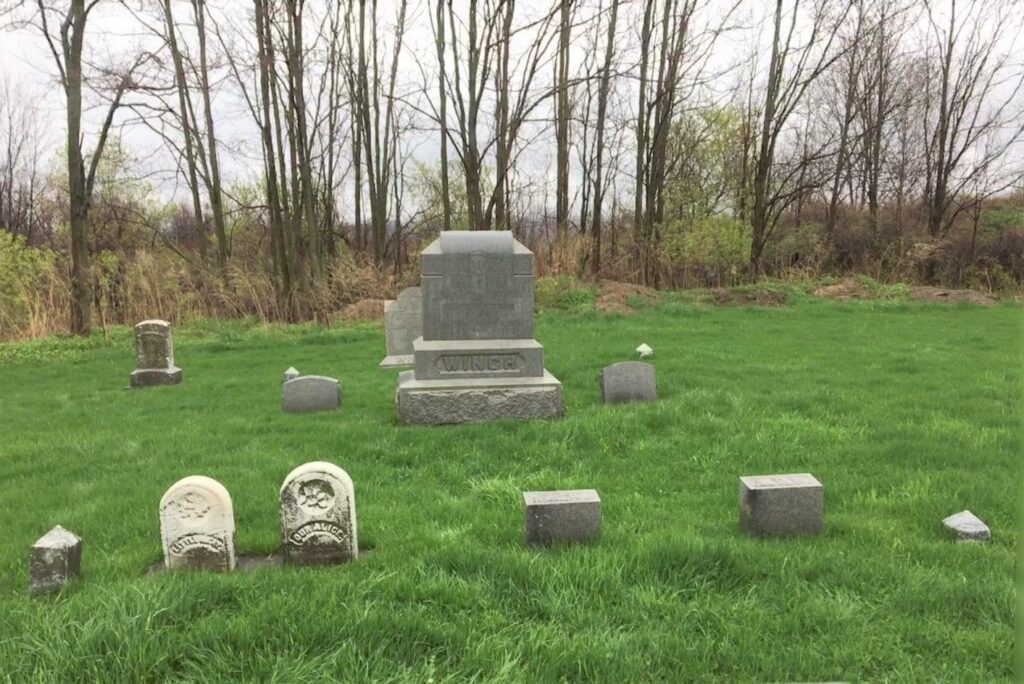
Winch Family Plot in Canadice Corners Cemetery – Photo by author
With Honeoye Lake stretching out below, the rolling hillsides of Canadice surround the cemetery. The setting of Canadice Corners Cemetery gives the visitor a feeling of going back in time, to the small, white steepled churches of 18th and 19th century New England. The early inhabitants of Canadice came from various New England states to make a home and to farm the virgin, fertile farmlands of the region. Such was the experience of the Winch Family.
Emma J. Winch is my first cousin, three time removed. She was born in November of 1850 in Canadice, NY, the daughter of Lorenzo Winch and Abigail Jane Doolittle. Lorenzo Winch is described in his obituary as “one of the old residents of Canadice. He moved to Canadice many years ago. He was one of the most prominent citizens of the town and has a wide acquaintance.” Members of the Winch family were descended from families of the early Massachusetts settlers, including lineage to the Mayflower voyage of 1620.
Little information is known about Emma’s childhood. She was born on the Winch Farm in Canadice, and lived there nearly 75 years, until it was sold in 1924. Emma was a correspondent for the Livonia Gazette. In recognition of the farm remaining in the Winch Family for 96 years, the Livonia Gazette asked Emma to prepare this historical sketch of the family farm.
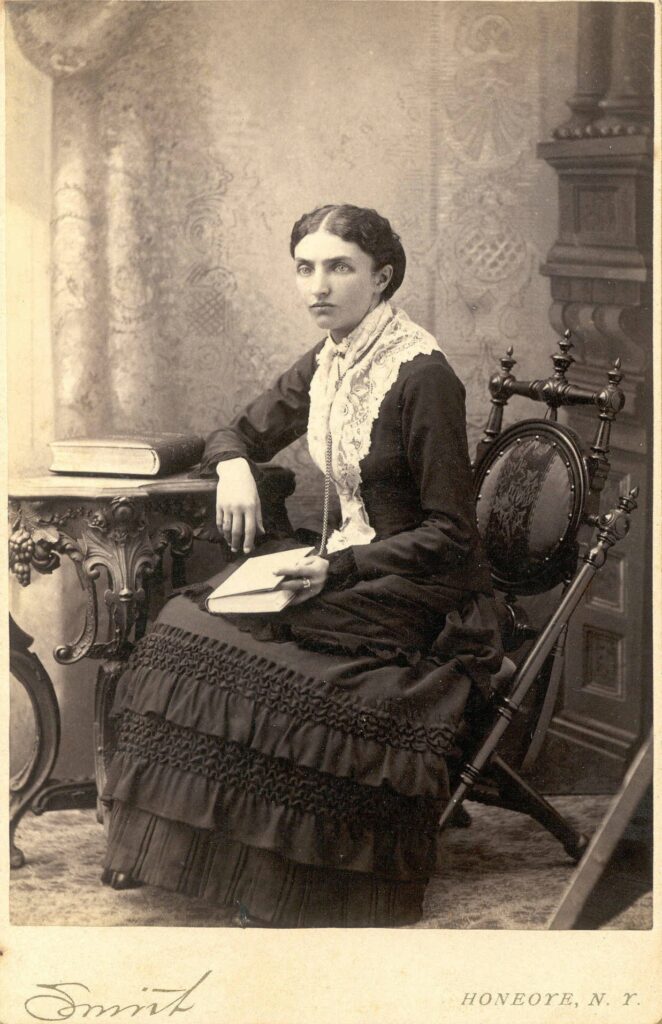
Emma J. Winch Circa 1900 – Photo Courtesy of Canadice Historian Margaret Bott
For Ninety Six Years
This is the Length of Time the Winch Farm at Canadice Has Been in the Family
A Brief Historical Sketch
By Emma J. Winch
The Winch farm, or “Oak Opening”, as it is called, was so named from having been an opening in a grove of oak timber on the hill. It is situated on the hill or upper road, one and a half miles south of Canadice church. But do not imagine as some do when they get there that you have reached the highest land in the vicinity, for if you really wish to get as high as possible, you will have to travel two miles further south.
The farm lies nearly midway between Honeoye Lake on the east and Canadice on the west. The deed for the farm calls for 144 acres more or less, and comprises several different tracts purchased from as many different people. It lies on both sides of the highway. It is well watered with plenty of material for wood, produces good crops, and has been called the most desirable farm on the hill.
That Indians roamed all over the land in earlier times is certain by the Indian relics that are found. In working on different parts of the farm, evidences are found of ancient dwellings of early settlers who have been here. A blacksmith shop stood on the road north of the present house. The first schoolhouse on the hill was built on this farm. The frame is still in use, after serving as a school house, a dwelling house, and then a shop.
Nearly a century ago, John Winch senior, Mary Thompson, his wife and two sons, Amasa aged 9 and Lorenzo 2, came from New Hampshire to New York state. John’s father, Luther Winch, came soon after, making his home with his son. He now lies in Canadice cemetery. The family experienced, in common with others, all the hardships of pioneer life. After spending probably about a year on what is now the Edgar Hoagland farm, he came to Oak Opening, where the rest of his life was spent. He died at the age of 89. He was a staunch Methodist his life through. He was the second supervisor of the town, held the offices of justice of the peace and notary public and for many years was a pension agent.
The first home of the family was over the brow of the hill in the orchard near a never failing spring. He probably only lived there about a year, when he built the present frame house near the road. The house was a good one for those times and with paint and many other repairs still does good service. When his oldest son Amasa married, the father built an addition to the home and the young couple set up housekeeping in the old home, helping care for the farm.
Not long after Lorenzo followed the example of his brother and married. Then a new house was built a little south of the old home and in the new house Lorenzo and wife set up housekeeping. In time the father and the mother became too feeble to do the work of the farm and the sons carried on the work together for many years. The old people died, the mother in 1870 and the father in 1882.
Sometime before the death of the father, the sons dissolved partnership and Amasa and his family bought a farm near the church known at that time as the Austin farm. Amasa spent the remainder of his life there, dying in 1896. Lorenzo remained on the home farm and moved to the old homestead. Lorenzo remained on the home farm till his death, which occurred in 1902. For some years before his death, he was enfeebled by age and his oldest son, Wilbur, carried on the farm and has continued to care for it till the present time. At the death of his mother, which occurred about 6 years ago, to settle up the estate Wilbur and his sister Emma purchased the farm and have remained there but they expect to leave the old home in the fall.
It might be an item of interest to some to know that all the deceased members of the John Winch family lie in Canadice cemetery with one exception, John Winch, junior, who lives in Hillsdale, Mich., where he married.
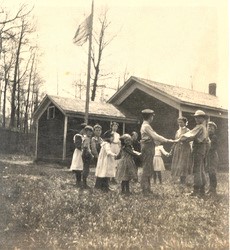
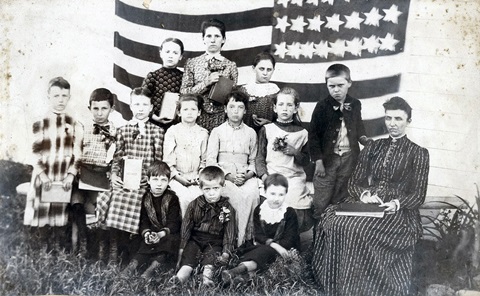
In her adult life, Emma was a school teacher and also taught Sunday School. Up until the Second World War, teachers were forbidden to marry. In fact, many teacher contracts had a clause that if the teacher were to marry, they would lose their job. As a result, Emma never married. She taught at School # 7 at Canadice Center.
Emma also taught for several years in other area schools, including District Number 8 School in Richmond, NY. In the 1890’s the area of southwest Richmond, southeastern Livonia and northeastern Canadice acquired the name “Toad Hill” because of the numerous amphibians populating that area. The School became commonly known as “Toad Hill School.” The official designation of District Number 8 School was forgotten and replaced in the community by “Toad Hill District.”
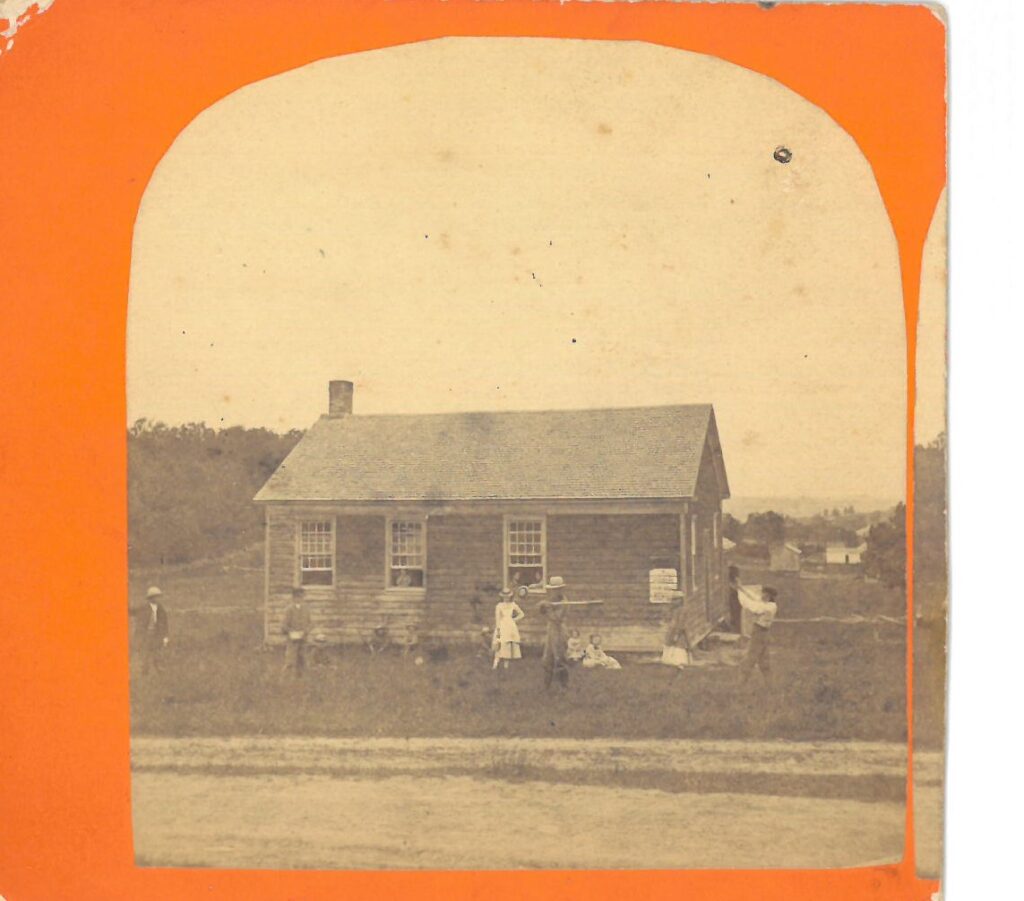
Since Emma was single, and having no family, she became very active in the Canadice Church Ladies Aid, later known as the Women’s Society of Christian Service.
The Ladies Aid met often at members’ homes and sponsored public dinners, perhaps raising $5.00 total which was a large sum at the time. From one end of the town to the other, many homes were opened to all, to come for dinners. The Ladies Aid group worked diligently to help with the expense of these dinners. Many activities were planned. Families opened their homes for socials. Refreshments were served. There were ice cream socials with home-made ice cream, bake sales, raffles, and fairs held throughout the years to help finance the church.
In her later years, Emma suffered from severe sciatic arthritis, thought to have been caused by an accident where she was thrown from a buggy on her way home from church.
Emma died December 13, 1933 at the age of 83. Her obituary shared that:
“The community mourns the passing Tuesday, Dec. 12, of Emma J. Winch, 83, a life-long resident of this place and a devout Christian. She was Sunday School Superintendent and teacher for many years, the latter office which she held at the time of her death. She was very active until about two weeks ago, when she was taken ill with the grip, which developed into pneumonia.”
She was buried in the Winch Family plot, in the churchyard of the Church she served so faithfully, completing her journey here on Earth, now preserved as a small piece of New York’s buried past.
___________________________
Motivation
Inevitably, the day to day lives of our ancestors fade over time along with the cemeteries and gravestones that mark their final resting places. Older burial grounds become neglected, forgotten and many, for better or worse, fall into ruin; some disappear forever. Sharing New York’s buried past helps preserve the rich histories of brave men and women who have gone before us. Lives of great expectation, long lives and short lives, lives of joy and sorrow, lives of triumph and tragedy, lives of gain and loss…are all shared and preserved when descendants honor their ancestors through recognition, research and reverence.
